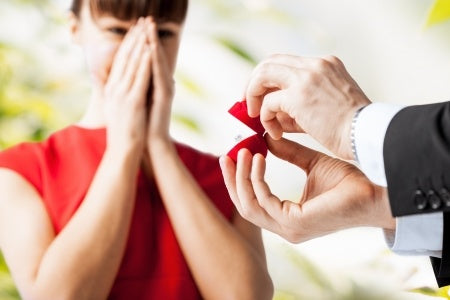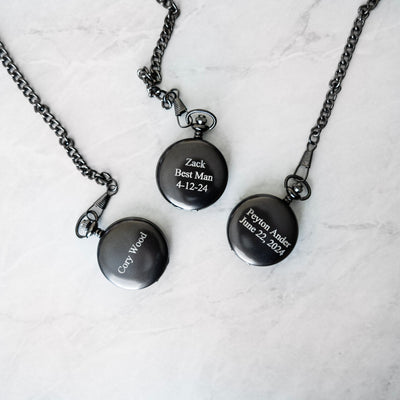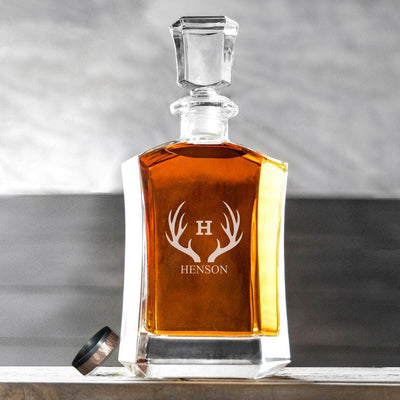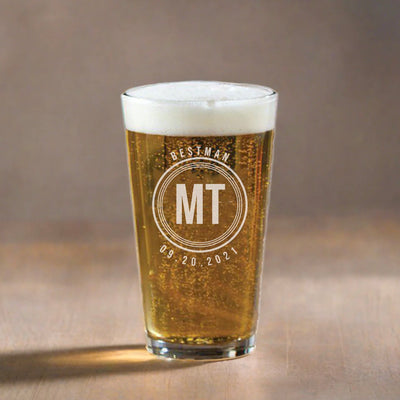Step-By-Step Guide to Buying an Engagement Ring

You’ve with the woman of your dreams. She’s the most special person you’ve ever met. You never thought you’d settle till that moment when you were watching her from afar and the words “this is it” washed over you slowly.
Congratulations, you found yourself a real catch! And though you know that marriage will have its ups and downs, you’re ready for this brave new step in your journey and want to begin it with the perfect proposal and the perfect ring.
And you’re at your first hurdle already…
Buying an engagement ring can seem like the most alien undertaking for a man. You may have already tried to go to a jeweler’s only to sit there in utter confusion as they asked you what shape, carat and color your sweetie would prefer.
But we got your back. We’ll take you step by step through the labyrinth of diamond shopping and you’ll come out ready to make the big leap.
Why Diamonds?
Contrary to what most think, the diamond engagement ring is not a practice from time immemorial. It’s actually a trend-turned-tradition when it comes to wedding customs.
And around the world till now, many people stick to older traditions of gold anklets and bracelets. But the diamond trend is catching on globally, mainly thanks to Hollywood movies and celebrity gossip.
Still, it’s easy to understand why diamonds make such perfect engagement rings. Being the hardest substance on earth while looking so beautiful and fragile makes for an almost poetic combination.
The way the light flickers off of their crystal formations, the elegant transparent depth that dazzles, and, of course, the symbolism of lasting forever.
See? It just takes a shift in perspective to get you in the right frame of mind for this first, and very important, step in your proposal.
Shopping Solo or Together?
There are pros and cons to both choices.
Buying the ring yourself and proposing out of the blue can be one of the most rewarding things you’ll ever do. Seeing the look of surprise and recognition on her face as she realizes what’s happening; watching her light up when you open the box; putting the ring on her finger as she tearfully says “yes!” to being your wife.
Those are moments that will last a lifetime.
But if you’re really unsure of her taste in jewelry, this might not be the best way to go. You can sacrifice a little bit of the magic in order ensure you get her exactly what she wants.
If that’s the case, what you could do is propose to her with a novelty or zirconium ring, let her know that it’s temporary and that you’d love to take her ring shopping over the weekend. You can then plan to make a day of it.
Either way, it’s really important to master the art of diamond quality analysis so that you’re well prepared even if she’s not.
Now let’s get right to it.
The 4 C’s
This is where we get real diamond-y. Diamonds are categorized by 4 C’s: color, clarity, carat and cut.
 Click image for larger version
Click image for larger version
Color
You might have heard of pink or blue diamonds. These can be very attractive and are usually more expensive than regular white diamonds. But unless you’re sure your lady really wants one of those, always go for white (colorless) stones. They’re classy, beautiful, and go with everything.
White diamonds also have their own color range, from the purest to slightly yellow. The range is divided into letters from D to Z, with D being totally colorless and Z being the one with the darkest tint of yellow.
The price range slides accordingly as well, with totally colorless being the most expensive.
Try to buy a diamond in the D to J range.
Our advice: when checking the diamond’s color, put it against a white background instead of a black one. This way, the color will show more easily. On a black background, even yellow tones will appear clear.
Clarity
Clarity denotes the number of blemishes on a diamond and the number of inclusions within it. Inclusions are impurities inside the crystal lattice itself that show up as spots or marks.
The clarity range goes like this:
IF – Internally Flawless
VVS – Very Very Slightly Included
VS – Very Slightly Included
SL1 – Slightly Included
SL2 – Slightly Included
I1 – Included
I2 – Included
I3 – Included
Our advice: inspect a diamond with the naked eye first; if you can see imperfections, it’s not a good choice. If you can’t see anything with the naked eye, use a 10-power magnifier to inspect it. Most jewelers will have a device like this on-hand.
Carat
Carat is the measurement of a diamond’s weight. Carats have 100 points each (points being subunits of carats), like millimeters in a centimeter. A carat equals 0.2 grams.
This is probably the factor that will be the most “fixed” for you. Women usually have a good idea of what size rock they want, and the other C’s can then be adjusted according to the rest of your budget.
But there’s still room to manoeuver here…
The bulk of the price tag comes from the carat, and diamond prices jump considerably along certain “carat lines”. The reason being the bigger the diamond, the more rare it is. And price increases not only overall, but also in price-per-carat.
Our advice: A diamond just under one carat, like 0.95 for example, is significantly less expensive than a diamond that is slightly over one carat. But placed next to each other, the difference is hardly noticeable. So that’s another way you can save money and put it towards getting better clarity, color or cut.
Cut
The cut is not the same as the shape. We’ll discuss shape later, but just know that the cut has a much bigger effect on quality than shape does.
The cut defines the depth and width of a diamond - its symmetry, polish and proportions. A very wide yet shallow cut will make a diamond appear bigger but less bright and sparkly. A very narrow yet deep cut will make the diamond look small even though its weight may be substantial. Both the shallow and deep cuts leak light out instead of reflect it back up.
The perfect cut is in-between and will allow the crystal to reflect light in angles that make it look brilliant and shiny.
Our advice: invest more in a better cut than a better color. If you have a choice between a one-carat diamond with a D color but a bad cut and a one-carat diamond with a perfect cut but a color of I-J, go for the latter. The brilliance of a better cut will outshine the color and even the clarity, assuming you’re still in good range.
The Shape and the Ring
Diamonds come in several different shapes; some go in and out of fashion.
There’s the round brilliant, the oval, the princess, the pear, the heart, the emerald, the marquise, the radiant and more...
Our advice: when in doubt, go with the classic round brilliant. It’s the most popular shape for a reason - it never goes out of style and never gets boring.
As for the ring itself, there are tons of designs and materials - from gold to platinum to silver to stainless steel, to a combination of two or more metals. The possibilities are many. Some are intricately designed, with tiny gems imbedded throughout, and some are very simple plain bands that give the mounted diamond the entire spotlight.
This is really all about preference. You can take a look at your fiancée’s jewelry for inspiration, or, if you’re unsure, just have her pick out what she likes. There are also jewelers who can create a custom-design for you.
Our advice: if you’ve chosen a diamond with a bit of a yellow tint, choose a yellow gold setting to offset the color in the diamond. The yellow in the diamond will show up more with a white gold or platinum band.
Certification, Warranty and Guarantee
Though most jewelers, including online retailers, are trustworthy and wouldn’t want their reputation ruined by a bad review, never take the risk anyway.
Make sure that you get a certificate from a well-established gemological institution, such as the Gemological Institute of America (GIA), that confirms the cut, color, carat and clarity of the diamond you’re buying. This is called a Diamond Grading Report and it’s a must!
And if you really want to go deep, this report will include information other than the 4 C’s, such as fluorescence and finishing, with their own grading.
You can also do a little research on the jeweler or retailer you’re buying from to check out their reviews and make sure they have no lawsuits or pending investigations against them. A great resource that can help you with this is the Better Business Bureau (bbb.org).
You should also get a warranty for your engagement ring, and perhaps also a money-back guarantee within a certain time period. Most jewelers will also offer a free cleaning service.
This way you know that you’ve got a high-quality ring from someone you can trust.
Online or In-Store?
That’s a great question, and each option has its pros and cons, of course.
In-store you get to see and inspect the diamond, watch how the light reflects off of it and imagine how it will look on her finger. And if you’re going to take her along for the shopping, she can try on different rings to see what looks best on her.
But there might be a higher price tag due to the expenses physical stores incur. And the variety of options is not as large as online.
With online shopping, you can find a few retailers that are trustworthy and offer all the certifications and warranties you need to feel safe with your purchase. Their websites are secure and they provide photos and videos, sometimes in 360-degree angles, so you can get a great feel for what you’re buying.
Of course it is not the same as seeing the diamond live and you run the risk of not getting exactly what you wanted and having to mail it back.
Again, with either choice, make sure you read reviews and do a little research to check if the retailers have any legal issues. And also make sure you are 100% clear on their return policies and the warranties they offer.
Budget and Pricing
The most important thing to know is what your budget is. Don’t buy into the arbitrary standard of spending a month or three’s salary on the ring.
You determine your budget yourself, according to your own financial situation as well as your fiancée’s preferences. There are women who prefer big bling and others who want something pretty but practical.
Make sure you know your girl.
Our advice: if your budget is limited, consider a ring with three small diamonds rather than trying to get the biggest diamond for the same price. The price of diamonds increases exponentially with size, so you can get more carats in total by buying a three-piece that looks beautiful rather than a one-piece that might look a bit too small. But make sure that your fiancée prefers this option first!
The other thing to keep in mind is that you can always buy her another ring later down the line if your budget won’t allow for too much right now. Your woman loves you and understands that you’re doing your best, so she won’t demand something that will leave you broke.
Now that you know your budget, it’s time to make the most out of it. Get the best quality you can for your money. And don’t be afraid to negotiate!




















Leave a comment